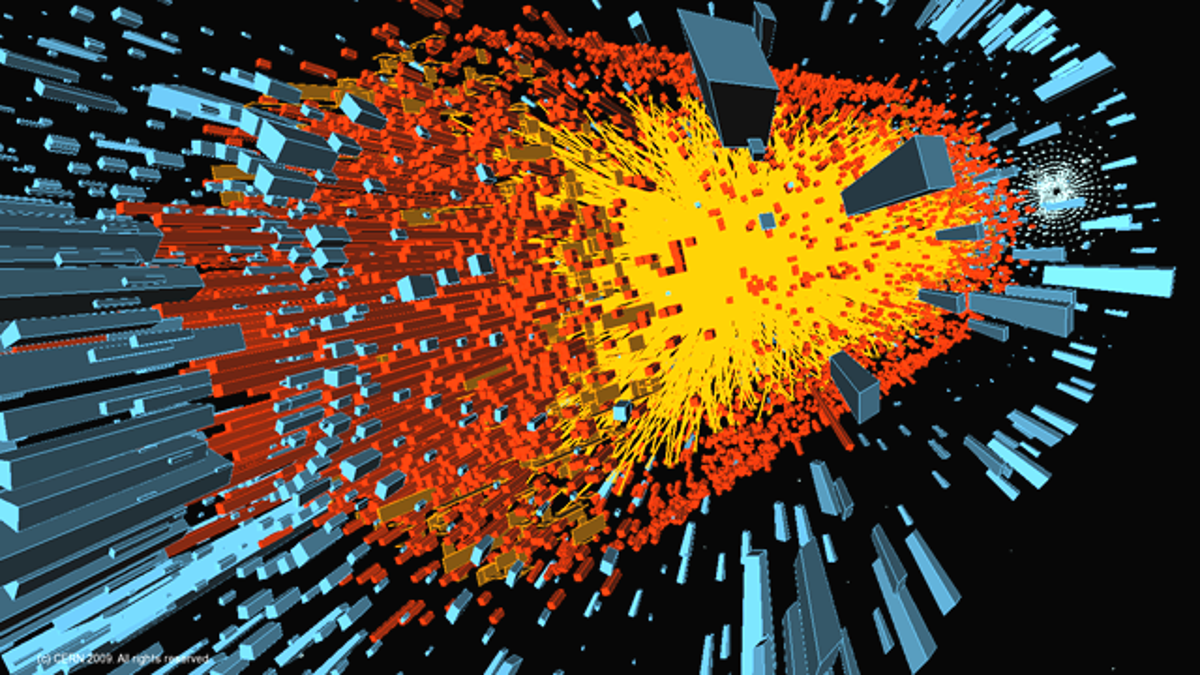
A computer simulation of the first lead ion collision in the Large Hadron Collider, a simulation of the events immediately after the Big Bang. (CERN)
A miniature Big Bang was created Sunday at the Large Hadron Collider (LHC), as the world’s most powerful atom-smasher successfully entered a new phase of exploration.
The particle accelerator at the CERN laboratory near Geneva smashed together lead atoms for the first time, to produce temperatures a million times hotter than those found at the heart of the sun.
The $8 billion machine had previously been colliding protons -- sub-atomic particles -- in the search for the Higgs boson or "God particle," thought to give matter its mass. These experiments were shut down last Thursday, to allow the LHC to run with lead ions instead -- atoms from which an electron has been removed -- to study different aspects of physics.
The lead ion collisions will allow the LHC to create a superheated mixture of subatomic particles called quark-gluon plasma, which pervaded the universe immediately after the Big Bang. One of the accelerator’s four detectors, called ALICE (A Lead Ion Collider Experiment), will examine this substance for clues to the early universe.
David Evans of the University of Birmingham, who works on the ALICE experiment, said: "We are thrilled with the achievement. This process took place in a safe, controlled environment, generating incredibly hot and dense sub-atomic fireballs with temperatures of over ten trillion degrees.
"At these temperatures even protons and neutrons, which make up the nuclei of atoms, melt -- resulting in a hot dense soup of quarks and gluons known as quark-gluon plasma. By studying this plasma, physicists hope to learn more about the Strong Force, one of the four fundamental forces of nature."
The potential advances scientists hope the LHC will make are prime topics for physicists and cosmologists seeking to understand how the universe works. Within the atom smasher's 16.8-mile tunnel, scientists are recreating on a miniature scale what happened within nano-seconds of the Big Bang 13.7 billion years ago, the tremendous explosion that created the galaxies, stars -- and life.
Six ultra-sophisticated detectors around the LHC record how particles behave after being smashed together, transmitting the data for analysis to laboratories at CERN and in other research centers around the globe.
